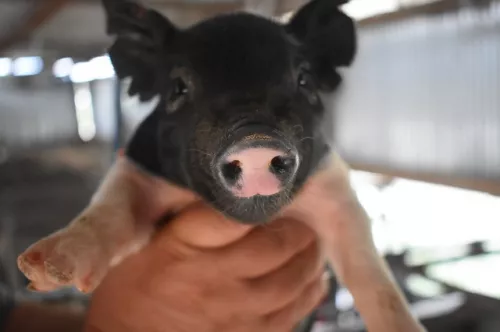Pork consumption in Russia is growing every year and shows the highest dynamics, in 2021 consumption exceeded 27 kg/person, and in 2022 it may exceed 28 kg/person.
After a two-year fall, global meat production showed an increase in 2021, amounting to 266.4 million tons. Please note that in 2019-2020 global meat production has declined due to an outbreak of ASF in Southeast Asia, which has affected China, the world's largest consumer and producer of pork. As a result, in 2019, China produced 11.5 million tons of pork less than in 2018, but the decline did not stop there, and in 2020 it was produced another 6.5 million tons less than in 2019 As a result, global pork production in 2020 fell below 100 million tonnes for the first time in many years.
As global production has been declining for two years (almost entirely due to a decline in production in China), exports to Southeast Asian countries, which have become deficient in pork, have increased, and in 2020 exports exceeded 12 million tons, becoming the highest in history.
Spain and a number of other EU countries, the USA, Brazil, Canada became the key countries where they increased production to increase export deliveries to the countries of Southeast Asia.
According to the USDA (US Department of Agriculture) forecast, global meat production in 2022 could grow by 1.4% compared to 2021 levels, mainly due to an increase in pork production in China and Vietnam, which are beginning to noticeably recover from the effects of ASF.
Initially, leading Western experts predicted that pig production in China could recover no earlier than 2025–2027. due to a large-scale reduction in output and the need to modernize the existing production model, in which the main share fell on household households. As a result, there were difficulties in controlling production and the epizootic situation.
To make up for the shortage of animal protein in the domestic market, the country has significantly increased the production of poultry meat as the closest substitute product, the output of which can be quickly increased due to the short production cycle. In the period from 2018 to 2021, the output of this type of meat increased by 3 million tons, to 14.7 million tons in 2021. The production of beef with veal also increased: from 6.4 million tons in 2018 to 7 million tons in 2021. In the pig industry, the re-equipment of pig farms began, as well as the construction of a huge number of new modern pig farms, which allowed China to significantly increase pork production in 2021 - by 7 million tons, up to 47.5 million tons, compared to the level of 2020. , and monthly production in November-December 2021 equaled pre-ASF levels.
The number of sows in China in 2015 was about 50 million heads, in 2018 (the year before ASF) - a little over 41 million heads, in 2019, when ASF broke out - 26 million heads. But already in 2020, the number of sows increased to 38 million heads, and in 2021 it exceeded 45 million heads. At the same time, the productivity and safety of animals remain at a low level due to the reduction in the requirements for the selection of pigs as sows, since the main goal was to stop the ongoing decline in pork production. In 2022, China begins to increase not only the number but also the quality of selected sows to further restore productivity in pig production.
Along with the growth of production, China increased imports. If in 2018 pork imports amounted to 2.1 million tons, then already in 2019 - 3.1 million tons, in 2020 - 5.6 million tons, and in 2021 - 5 million tons. In 2021 For the first time, a negative dynamics of imports relative to the previous year was noted. In 2021, primarily Spain and Brazil increased their exports to China, while countries such as the United States and Canada almost halved their exports (Chart 1).
According to the USDA forecast, in 2022 only one region of the leading exporters will show an increase in exports - this is Brazil.
China has already announced that it has achieved its required volume of pork production and that there is no need to return to the level of 2018, while the production of poultry, beef and veal meat will remain at the current increased level. In 2022, China predicts a decrease in pork imports to 3.5 million tons, in this regard, USDA expects a decrease in global exports by 4%, to 11.7 million tons.
In 2022, export opportunities for pig farmers in the world will continue, as China remains the largest importer.
© Inline LLC 2015-2026. Privacy Policy | Terms of Service